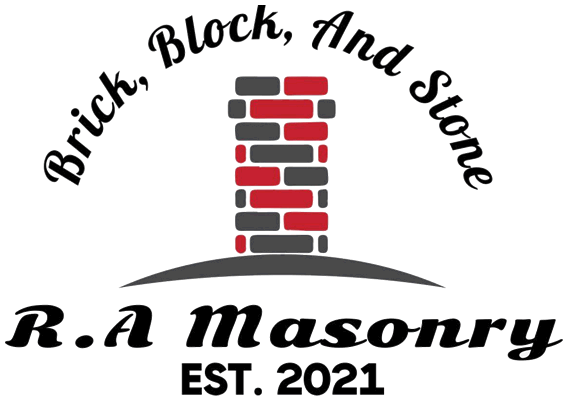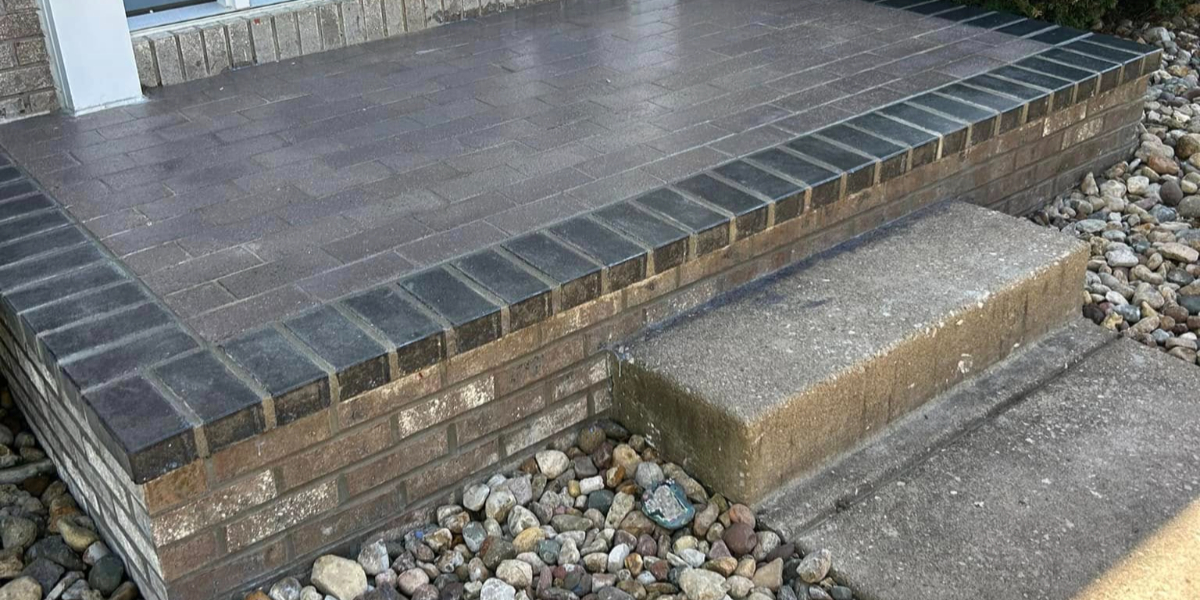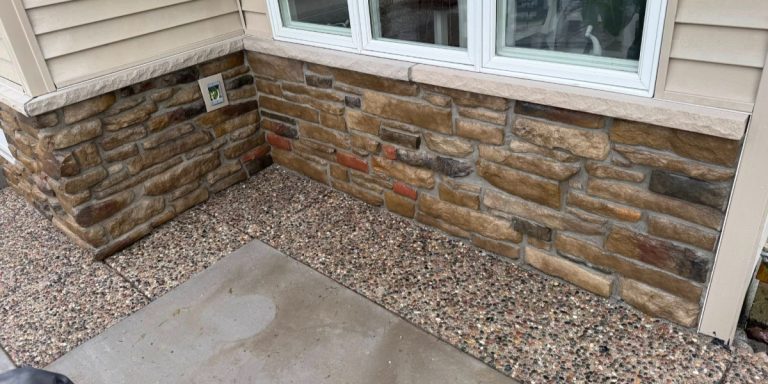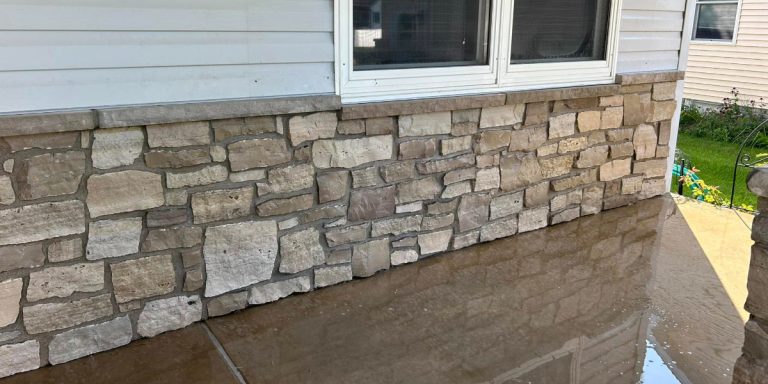Are brick patios better than concrete patios?
Choosing the right material for your patio is one of the most important decisions you’ll make when designing your outdoor space. Homeowners across Moline and the Quad Cities often compare brick patios and concrete patios to determine which one offers better durability, aesthetics, and long-term value.
At R.A. Masonry, we’ve built and restored hundreds of patios using both materials. Our experience has shown that the “best” option depends on your goals, budget, and the character of your home. In this guide, we’ll explain the key differences between brick and concrete patios so you can make an informed decision that will stand the test of time.
Understanding brick patios
Brick patios are made using clay bricks fired in a kiln to create dense, weather-resistant pavers. Each brick is laid individually in a pattern over a compacted base, forming a surface that’s both functional and timeless.
Brick patios have been used for centuries and are known for their classic appearance and lasting durability. The rich, earthy tones of clay give outdoor spaces a warm and inviting look that complements both historic and modern homes.
Benefits of brick patios
-
- Timeless appearance: Brick never goes out of style. It complements nearly any type of home, from traditional to contemporary.
- Durability: Properly installed brick can last for decades. It resists wear and tear and holds up well to freeze-thaw cycles.
- Low maintenance: Bricks can be easily cleaned, and individual units can be replaced if damaged.
- Eco-friendly: Brick is made from natural clay and can be recycled or reused.
- Color retention: The color of clay brick is baked in, so it won’t fade under sunlight or weather exposure.
Things to consider with brick patios
While brick offers many benefits, there are a few points to consider. Brick patios can be slightly more expensive due to the cost of materials and the labor involved in laying each piece by hand. Over time, weeds can grow between joints if the patio isn’t properly maintained, though this is easily managed with modern polymeric joint sand.
In climates like Illinois, where freeze-thaw cycles are common, it’s important to use frost-resistant brick and ensure the base is properly prepared. At R.A. Masonry, our installation process includes a deep, compacted gravel foundation and precise joint alignment to prevent shifting and cracking.
Understanding concrete patios
Concrete patios are created by pouring a mixture of cement, sand, aggregate, and water into a form that hardens into a smooth surface. They can be left plain or enhanced with decorative finishes such as stamping, staining, or scoring to mimic natural stone or tile.
Concrete patios are popular because they provide a clean, uniform surface and are relatively fast to install. They can be customized with color additives and patterns, making them versatile for different design styles.
Benefits of concrete patios
-
- Affordability: Concrete is generally less expensive than brick, especially for large patios.
- Smooth and uniform finish: Ideal for contemporary designs or modern homes.
- Customizable appearance: Stamped or stained concrete can resemble stone or brick at a lower cost.
- Quick installation: Pouring concrete typically takes less time than setting individual pavers.
Things to consider with concrete patios
Concrete’s biggest drawback is its tendency to crack over time. Even with proper installation, weather changes and ground movement can create hairline cracks that may spread. Repairs can be difficult because color-matched patching often remains visible.
Concrete also requires periodic sealing to maintain its appearance and protect against stains or moisture infiltration. In areas with harsh winters like Moline, deicing salts can damage the surface, leading to scaling or flaking.
At R.A. Masonry, we use high-strength concrete mixes and proven finishing techniques to minimize these risks, but homeowners should be aware that concrete requires more ongoing maintenance than brick or stone pavers.
Comparing brick and concrete patios
When choosing between brick and concrete patios, the decision usually comes down to balancing cost, maintenance, and appearance.
Brick patios have a distinct, handcrafted charm that adds lasting value to your home. Each brick is individually placed, which allows for creative layouts such as herringbone, basketweave, or running bond patterns. The result is a patio that feels warm, natural, and unique to your property.
Concrete patios, while more budget-friendly, tend to have a smoother, more uniform look. They’re well-suited for large open spaces or minimalist designs but may lack the texture and character of real brick.
From a maintenance perspective, brick offers an advantage because damaged sections can be replaced individually. Concrete, by contrast, often requires full-section repair if cracking occurs. In the long term, this makes brick a more sustainable choice for homeowners who value longevity and ease of repair.
Aesthetic and design flexibility
Both brick and concrete offer a wide range of design options, but they achieve different effects.
Brick provides warmth and texture, making it ideal for historic properties or homes that emphasize natural materials. The rich red and brown hues blend beautifully with landscaping, giving your yard an established, elegant appearance.
Concrete, on the other hand, offers versatility in color and texture. Stamped concrete can replicate the look of slate, cobblestone, or even wood, giving homeowners more flexibility at a lower cost. However, no stamped or stained surface perfectly captures the authenticity of real brick or stone.
At R.A. Masonry, we help homeowners design patios that complement their architecture and outdoor space. Whether you prefer the crisp geometry of a poured concrete pad or the intricate texture of brick pavers, our craftsmen ensure every detail enhances your property’s overall appeal.
Durability in Midwest climates
In areas like the Quad Cities, where winter frost and temperature fluctuations are common, choosing a material that can withstand the freeze-thaw cycle is critical.
Brick, especially clay pavers rated for exterior use, performs exceptionally well in cold climates. The small gaps between bricks allow for slight ground movement without cracking the entire surface. If one brick becomes damaged, it can be replaced easily without affecting the rest of the patio.
Concrete, while strong, is more susceptible to cracking because it’s a single, continuous surface. Expansion joints help control cracking, but long-term exposure to moisture and frost can still take a toll. For homeowners who want the most resilient and repairable option, brick typically holds up better in the long run.
Maintenance and longevity
Properly maintained brick patios can last over 50 years. Occasional joint re-sanding or sealing may be required, but overall upkeep is minimal. Cleaning typically involves sweeping and rinsing with a garden hose.
Concrete patios may last 20 to 30 years before significant resurfacing or replacement is needed. They should be sealed every few years to protect against stains and freeze-thaw damage. Any cracks that form should be repaired quickly to prevent water infiltration.
At R.A. Masonry, our installation techniques are designed to maximize the lifespan of both materials. We prepare a solid base, ensure proper drainage, and use high-quality materials to prevent shifting and water-related issues.
Cost considerations
Cost is often a deciding factor when choosing between brick and concrete. Concrete patios generally cost less upfront because the material and labor costs are lower. However, long-term maintenance and potential repairs can add up over time.
Brick patios have a higher initial cost due to the material and labor involved in setting each brick by hand. But their long lifespan and easy repair process often make them more cost-effective in the long term. Many homeowners view brick as an investment that enhances both the beauty and resale value of their property.
If you’re unsure which option aligns best with your budget, R.A. Masonry provides detailed estimates that break down material, labor, and maintenance considerations so you can make a confident choice.
Case example: upgrading a backyard in Rock Island
A homeowner in Rock Island, IL, contacted R.A. Masonry to replace their aging concrete patio, which had developed cracks and surface discoloration. After reviewing their options, we recommended a brick patio with a herringbone pattern to better match their home’s architecture and landscaping.
The finished project transformed the space. The new brick surface added warmth, complemented the existing garden design, and created a more inviting outdoor area. Five years later, the patio still looks as good as the day it was installed, requiring only routine cleaning and occasional re-sanding of joints.
Why choose R.A. Masonry for your patio project
At R.A. Masonry, we bring decades of experience and craftsmanship to every project. Whether you choose a brick patio, a concrete pad, or a custom masonry design, our team ensures your investment is built to last.
What sets us apart:
-
- Licensed and insured professionals with years of field experience
- Locally trusted throughout Moline and the Quad Cities
- Attention to detail in design, base preparation, and finishing
- High-quality materials and expert installation techniques
- Commitment to customer satisfaction and long-term value
We believe every outdoor space should reflect both durability and beauty, and our patios are designed to deliver both.
Areas we serve
R.A. Masonry proudly serves homeowners throughout the Quad Cities, including:
-
- Moline, IL
- Rock Island, IL
- East Moline, IL
- Silvis, IL
- Davenport, IA
- Bettendorf, IA
- Milan, IL
- Coal Valley, IL
Our services include patio installation, brick and stone restoration, retaining wall construction, foundation waterproofing, and chimney repair for residential and commercial properties.
Build your perfect patio with R.A. Masonry
Enhance your home with a beautifully built brick or concrete patio from R.A. Masonry
Whether you’re drawn to the timeless character of brick or the sleek modern look of concrete, our licensed masons can help design and build a patio that fits your lifestyle and complements your home. From concept to completion, we deliver quality craftsmanship and professional service that homeowners throughout Moline and the Quad Cities trust.
Call (309) 230-6064 or request an estimate online to schedule your consultation today. We proudly serve Moline, Rock Island, Davenport, and surrounding Illinois and Iowa communities with durable, high-quality masonry patio installations.



